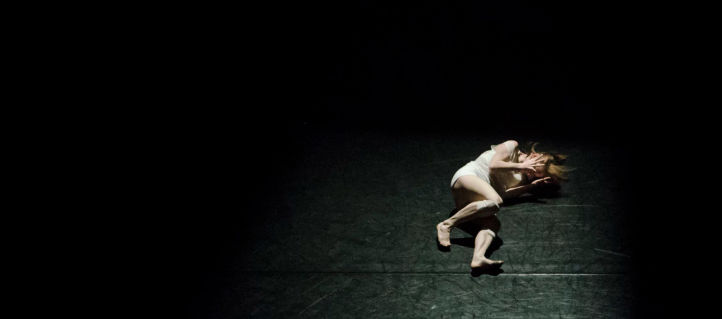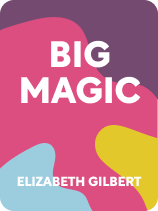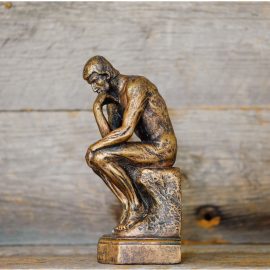

This article is an excerpt from the Shortform book guide to "Big Magic" by Elizabeth Gilbert. Shortform has the world's best summaries and analyses of books you should be reading.
Like this article? Sign up for a free trial here .
What is the connection between creativity and suffering? Does pain really facilitate creativity? Can you create great work without suffering for it?
There is a common tendency to see creativity as necessitating or being facilitated by suffering. This view has been promulgated by Christianity and 18th and 19th century German Romanticism, both of which put a premium on agony. The central idea of these philosophies is that you cannot create something great without suffering for it.
In this article, we’ll explore why pain is commonly associated with creativity, and why this is, in fact, far from the truth.
Editor’s note: This article is part of Shortform’s guide to creativity. If you like what you read here, there’s plenty more to check out in the guide!
Suffering Is an Obstacle to Creativity
Gilbert is correct in suggesting that German Romanticism is partly to blame for our associating pain with creativity. German Romanticism was an artistic and philosophical movement centered around the concept of “Sturm und Drang,” “storm and stress.” For the romantics, human individualism and extreme emotions were both needed to create art and the only worthy subjects of that art. With its emphasis on turbulence and passion, German Romanticism didn’t last long as a movement—in much the same way that a turbulent relationship with Creative Sorcery likely won’t be a lasting one.
Gilbert recognizes that suffering is often unavoidable and that many creators suffer in spite of their desire to be healthy and happy. But she maintains that suffering does not spawn creativity and believes the opposite is true: that suffering is an obstacle to creativity.
(Shortform note: Gilbert rejects the belief that suffering can be a positive creative force. But research has shown that in some cases, trauma can cause a person to embark on a journey of spiritual growth, which could arguably be channeled positively into a creative pursuit. Still, this can coexist with Gilbert’s belief: While you should not cause yourself suffering because you feel it necessary to be a good creator (Gilbert’s stance), if you are caused to suffer—as all of us are at some point in our lives—you can use that experience to grow and become a sager and more compassionate creative.)
Let’s discuss three specific reasons why suffering should not be seen as intrinsically linked to creativity.
Reason 1: Being a “Tortured Artist” Prevents You From Growing
The first reason why Gilbert wants to dispel the notion that suffering is necessary for creativity is that “tortured artists” are allowed to get away with bad behavior and avoid personal growth. Viewing yourself as a suffering artist gives you license to do things other people would consider selfish: not earn enough money to support yourself, neglect your friends and family, be rude or dismissive toward others, destroy your living space and possessions, and so on.
While such behavior may feel good at the time, you ultimately only harm yourself, says Gilbert: You deny yourself the opportunity to improve and grow as a human and stay stuck in childish and self-destructive cycles that limit your potential.
| Creativity and Suffering: The Tortured Artist Syndrome Gilbert’s description of being a “tortured artist” who refuses to grow is similar to having a victim mentality. Those with a victim mentality don’t take responsibility for their lives and act as if they were helpless to improve themselves. This self-sabotaging behavior limits their potential to succeed and be happy. Some of the ways to escape a victim mentality may also apply to escaping the “tortured artist” identity: Be kind to yourself. Negative self-talk, like calling yourself “a loser” or “a failure,” will only make self-improvement seem more pointless. When you are nice to yourself instead, you begin to see yourself as someone who can improve. Take responsibility for your actions. You may not be able to change how you feel—for instance, miserable because your project isn’t going as planned—but you can decide if you are going to take out that misery on your friend. Stop blaming others. Opt to see everything in life as an opportunity to gain agency, rather than as a chance to cast blame. Instead of blaming your friend for not inviting you to a fun event, for instance, ask yourself if you could have just invited yourself along. You’ll begin to discover that you have more choice in life than you thought. |
Reason 2: Suffering Severely Limits Your Creativity
The second reason why Gilbert pushes against creativity requiring suffering is that she feels this assertion to be patently untrue. Gilbert sees creativity as arising in spite of suffering, not because of it. In her own experience, anguish makes her less, not more, creative. It keeps ideas and her genius at bay and puts her out of touch with Creative Sorcery.
(Shortform note: Scientific evidence backs up Gilbert’s assertion that suffering inhibits creativity. Depression, a common form of mental suffering, can shrink parts of the brain. This can lead to problems with learning, memory, brain development, and mood. With such impairments, it’s not hard to imagine it being difficult to create.)
Reason 3: Suffering Can Extinguish the Creative Flame
In the very worst cases, suffering for creativity can lead to death, writes Gilbert. A too-great number of artists have died tragically as a result of their mental suffering. In such cases, in addition to the horrendous loss of life, the artist’s creativity becomes lost forever, too. Others cannot find joy, solace, or encouragement in the artist’s new works.
(Shortform note: Gilbert writes that many creators suffer so greatly that suicide seems like the only escape left. Even worse, if you earn money as a creative, it can be doubly hard to maintain mental equilibrium. Mental anguish can be compounded by work environments that are unsupportive, low-paying, and high-pressure. Taking a creative job, therefore, may leave you more likely to have a mental or emotional breakdown.)
Focus Only on the Journey
As you approach a project, Gilbert also stresses that your enjoyment of the creative journey should be your only focus. Let go of any goals or desired outcomes and prioritize the process.
According to Gilbert, if you create to receive external validation or to achieve something particular, you make your creativity contingent upon forces outside of your control. You’re much more likely to give up your pursuit, then, if you don’t achieve your goals.
Don’t Strive for Success
Gilbert advises specifically against striving for some perceived form of “success.” You ultimately have little control over your creative success, so to avoid anguish and unhappiness, don’t even aim for it.
Success, in whatever shape is common to your particular creative field, is hard to come by because it’s not dependent merely upon your hard work, argues Gilbert. Often, there are creative gatekeepers to success, like publishing companies and funding agencies, which have their own agendas. Plus, success is often simply a matter of being in the right place at the right time.

———End of Preview———
Like what you just read? Read the rest of the world's best book summary and analysis of Elizabeth Gilbert's "Big Magic" at Shortform .
Here's what you'll find in our full Big Magic summary :
- Why integrating creativity into your daily life will make you feel more fulfilled
- Why creating for money is a form of self-sabotage
- Why you should never focus on external validation of your creations






